SBOS959D December 2018 – April 2022 INA819
PRODUCTION DATA
- 1 Features
- 2 Applications
- 3 Description
- 4 Revision History
- 5 Device Comparison Table
- 6 Pin Configuration and Functions
- 7 Specifications
- 8 Detailed Description
- 9 Application and Implementation
- 10Power Supply Recommendations
- 11Layout
- 12Device and Documentation Support
- 13Mechanical, Packaging, and Orderable Information
Package Options
Mechanical Data (Package|Pins)
Thermal pad, mechanical data (Package|Pins)
- DRG|8
Orderable Information
7.6 Typical Characteristics
at TA = 25°C, VS = ±15 V, RL = 10 kΩ, VREF = 0 V, and G = 1 (unless otherwise noted)
Table 7-1 Table of Graphs
| DESCRIPTION | FIGURE |
|---|---|
| Typical Distribution of Input Stage Offset Voltage | Figure 7-1 |
| Typical Distribution of Input Stage Offset Voltage Drift | Figure 7-2 |
| Typical Distribution of Output Stage Offset Voltage | Figure 7-3 |
| Typical Distribution of Output Stage Offset Voltage Drift | Figure 7-4 |
| Input Stage Offset Voltage vs Temperature | Figure 7-5 |
| Output Stage Offset Voltage vs Temperature | Figure 7-6 |
| Typical Distribution of Input Bias Current, TA = 25°C | Figure 7-7 |
| Typical Distribution of Input Bias Current, TA = 90°C | Figure 7-8 |
| Typical Distribution of Input Offset Current | Figure 7-9 |
| Input Bias Current vs Temperature | Figure 7-10 |
| Input Offset Current vs Temperature | Figure 7-11 |
| Typical CMRR Distribution, G = 1 | Figure 7-12 |
| Typical CMRR Distribution, G = 10 | Figure 7-13 |
| CMRR vs Temperature, G = 1 | Figure 7-14 |
| CMRR vs Temperature, G = 10 | Figure 7-15 |
| Input Current vs Input Overvoltage | Figure 7-16 |
| CMRR vs Frequency (RTI) | Figure 7-17 |
| CMRR vs Frequency (RTI, 1-kΩ source imbalance) | Figure 7-18 |
| Positive PSRR vs Frequency (RTI) | Figure 7-19 |
| Negative PSRR vs Frequency (RTI) | Figure 7-20 |
| Gain vs Frequency | Figure 7-21 |
| Voltage Noise Spectral Density vs Frequency (RTI) | Figure 7-22 |
| Current Noise Spectral Density vs Frequency (RTI) | Figure 7-23 |
| 0.1-Hz to 10-Hz RTI Voltage Noise, G = 1 | Figure 7-24 |
| 0.1-Hz to 10-Hz RTI Voltage Noise, G = 1000 | Figure 7-25 |
| 0.1-Hz to 10-Hz RTI Current Noise | Figure 7-26 |
| Input Bias Current vs Common-Mode Voltage | Figure 7-27 |
| Typical Distribution of Gain Error, G = 1 | Figure 7-28 |
| Typical Distribution of Gain Error, G = 10 | Figure 7-29 |
| Gain Error vs Temperature, G = 1 | Figure 7-30 |
| Gain Error vs Temperature, G = 10 | Figure 7-31 |
| Supply Current vs Temperature | Figure 7-32 |
| Gain Nonlinearity, G = 1 | Figure 7-33 |
| Gain Nonlinearity, G = 10 | Figure 7-34 |
| Offset Voltage vs Negative Common-Mode Voltage | Figure 7-35 |
| Offset Voltage vs Positive Common-Mode Voltage | Figure 7-36 |
| Positive Output Voltage Swing vs Output Current | Figure 7-37 |
| Negative Output Voltage Swing vs Output Current | Figure 7-38 |
| Short Circuit Current vs Temperature | Figure 7-39 |
| Large-Signal Frequency Response | Figure 7-40 |
| THD+N vs Frequency | Figure 7-41 |
| Overshoot vs Capacitive Loads | Figure 7-42 |
| Small-Signal Response, G = 1 | Figure 7-43 |
| Small-Signal Response, G = 10 | Figure 7-44 |
| Small-Signal Response, G = 100 | Figure 7-45 |
| Small-Signal Response, G = 1000 | Figure 7-46 |
| Large Signal Step Response | Figure 7-47 |
| Closed-Loop Output Impedance | Figure 7-48 |
| Differential-Mode EMI Rejection Ratio | Figure 7-49 |
| Common-Mode EMI Rejection Ratio | Figure 7-50 |
| Input Common-Mode Voltage vs Output Voltage, G = 1, VS = 5 V | Figure 7-51 |
| Input Common-Mode Voltage vs Output Voltage, G = 100, VS = 5 V | Figure 7-52 |
| Input Common-Mode Voltage vs Output Voltage, VS =±5 V | Figure 7-53 |
| Input Common-Mode Voltage vs Output Voltage, VS =±15 V | Figure 7-54 |
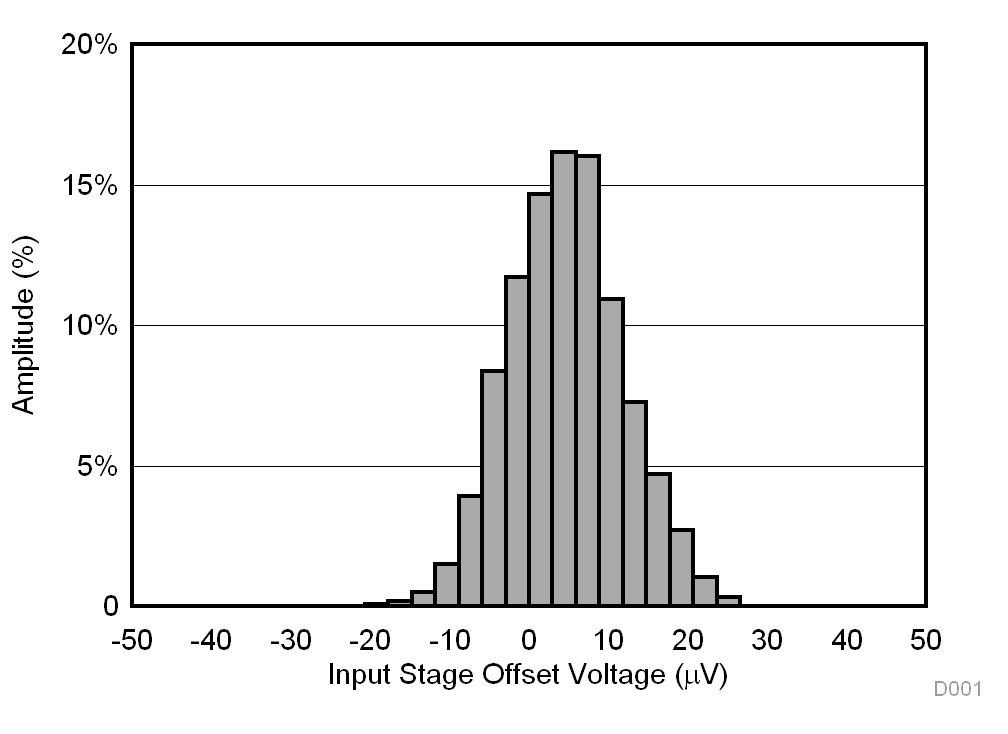
| N = 1555 | Mean = 4.71 µV | Std. Dev. = 7.12 µV |
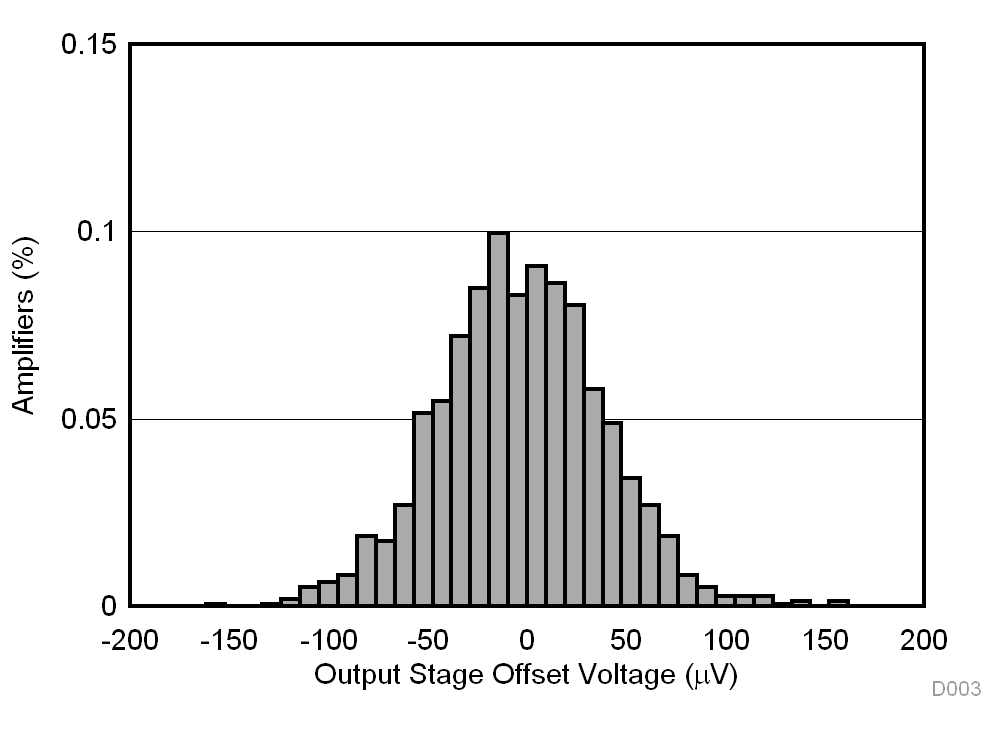
| N = 1555 | Mean = –3.18 µV | Std. Dev. = 41.26 µV |
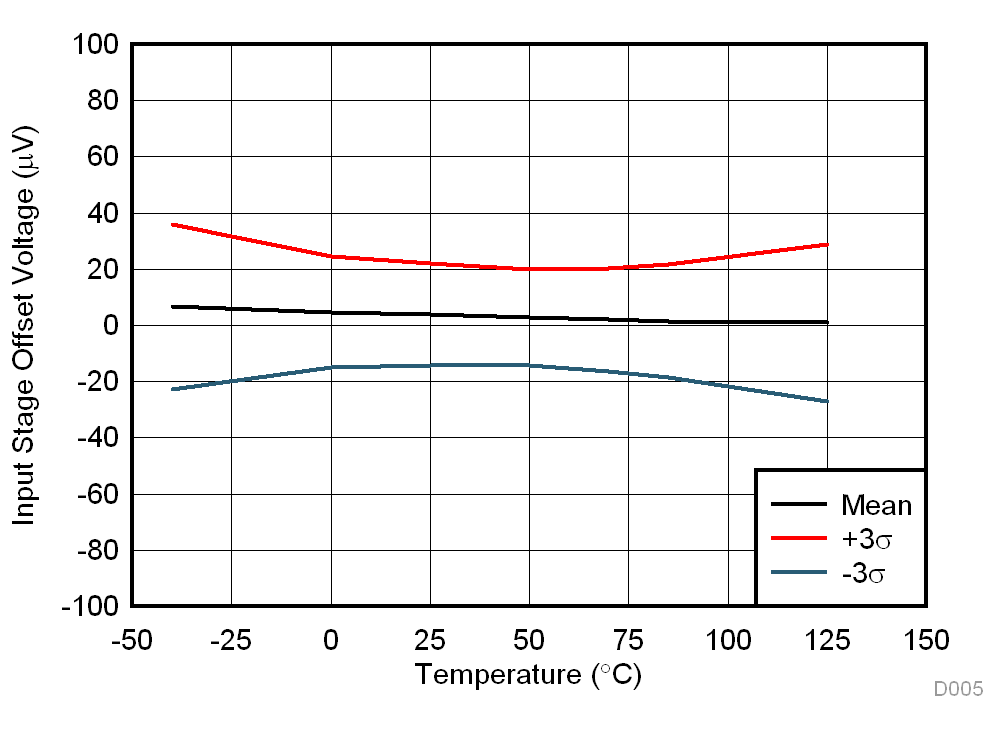
| 45 units, 1 wafer lot |
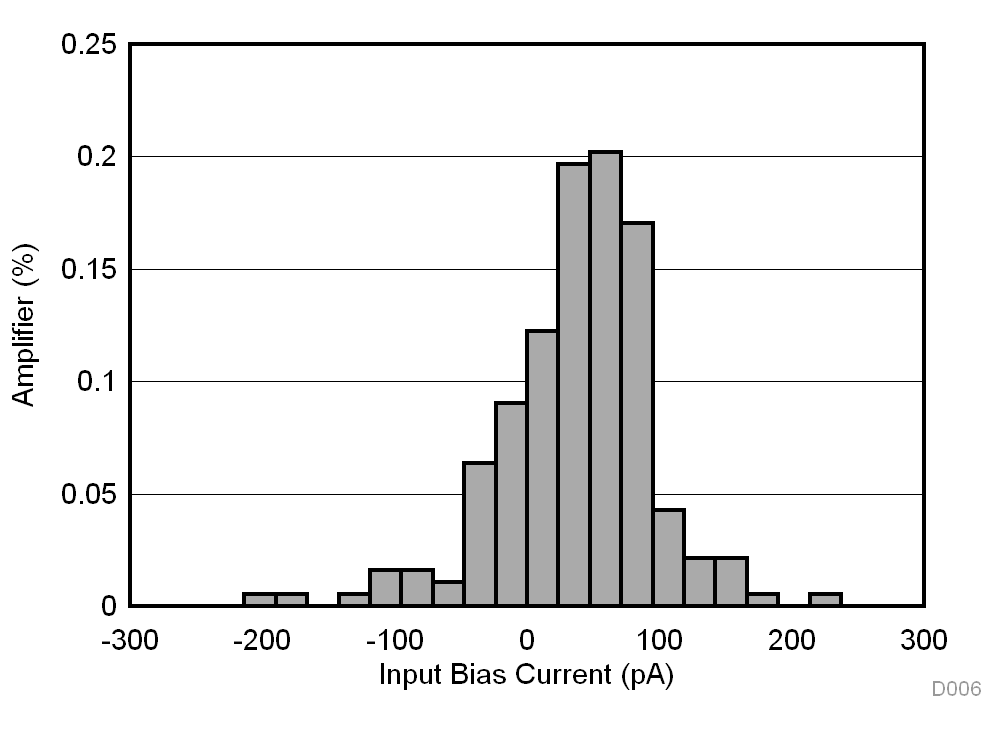
| N = 94 | Mean = 37.13 pA | Std. Dev. = 57.65 pA |
| TA = 25°C |
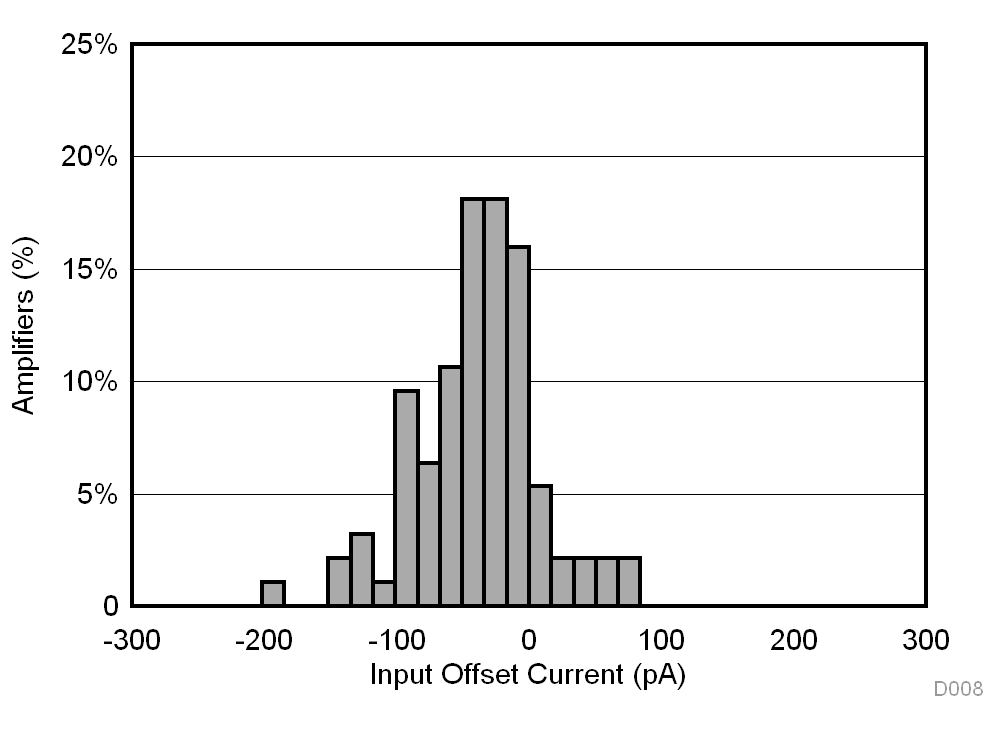
| N = 94 | Mean = –38.82 pA | Std. Dev. = 47.24 pA |
| N = 94 | G = 1 | |
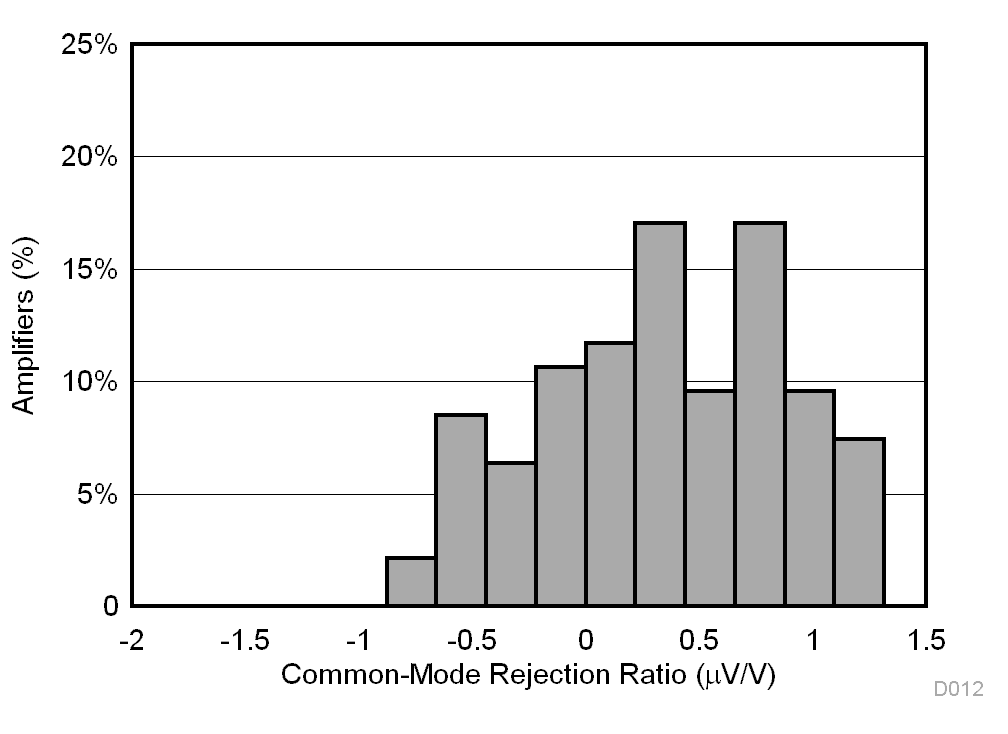
| N = 94 | Mean = 0.34 µV/V | Std. Dev. = 0.54 µV/V |
| G = 10 |
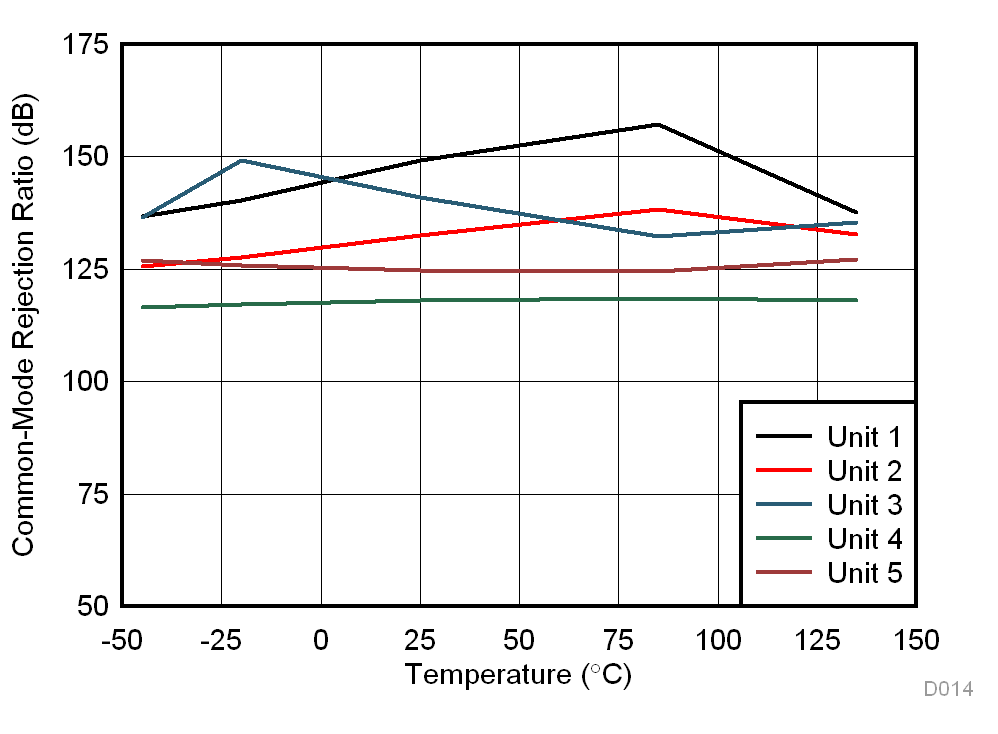
| 5 typical units | G = 10 | |
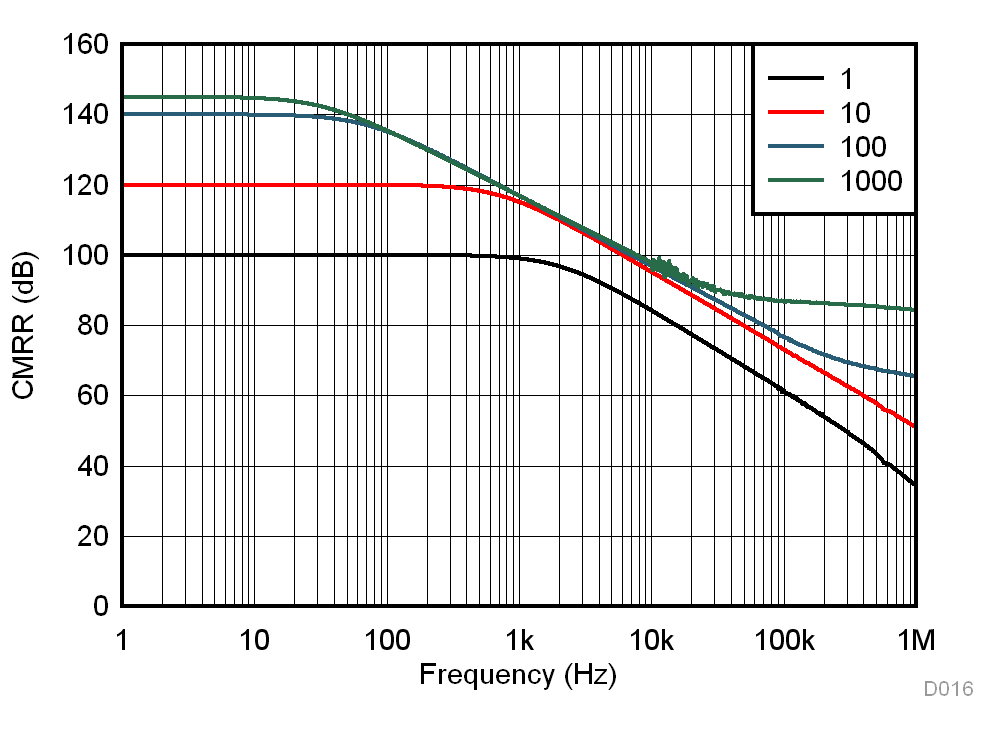
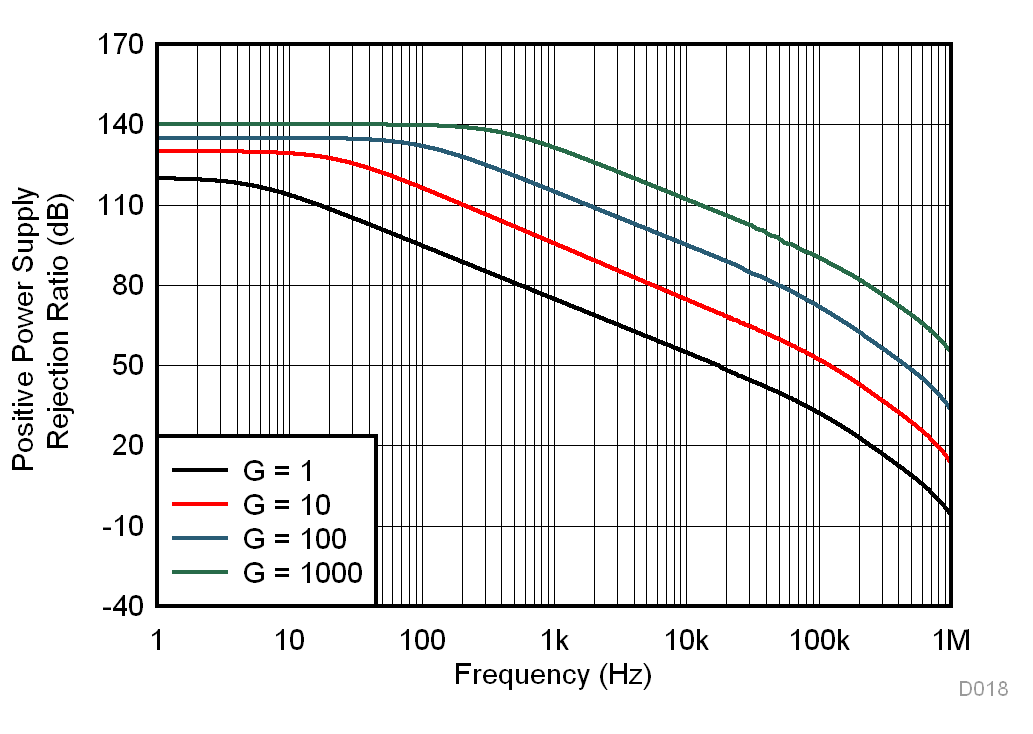
 Figure 7-21 Gain
vs Frequency
Figure 7-21 Gain
vs Frequency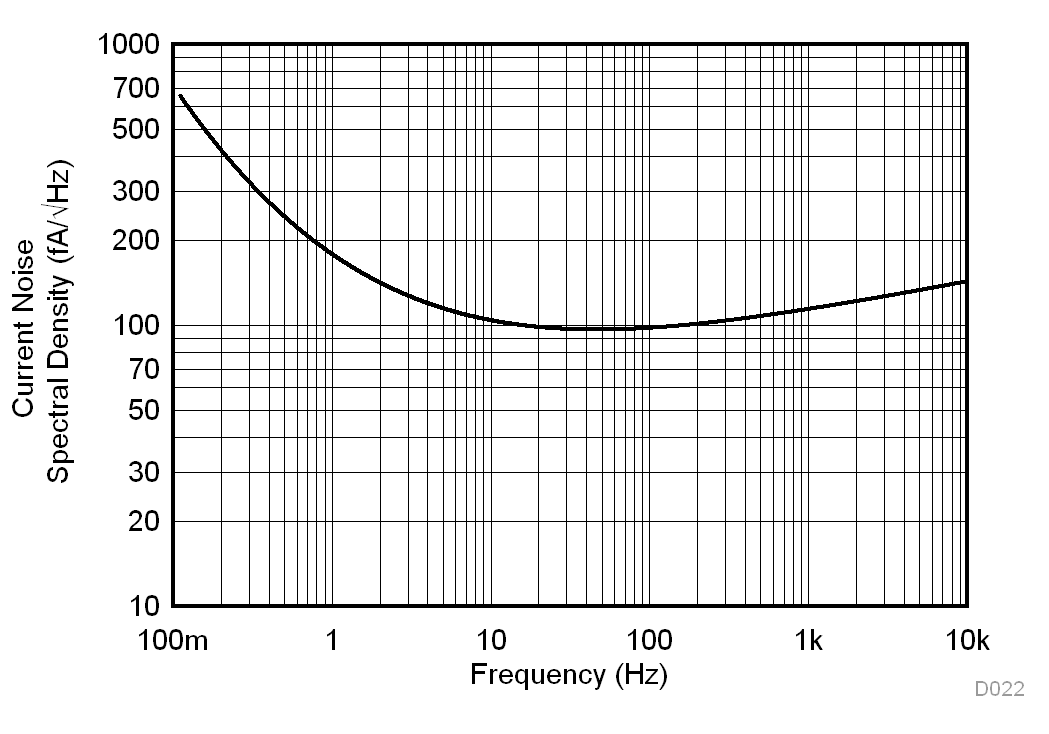
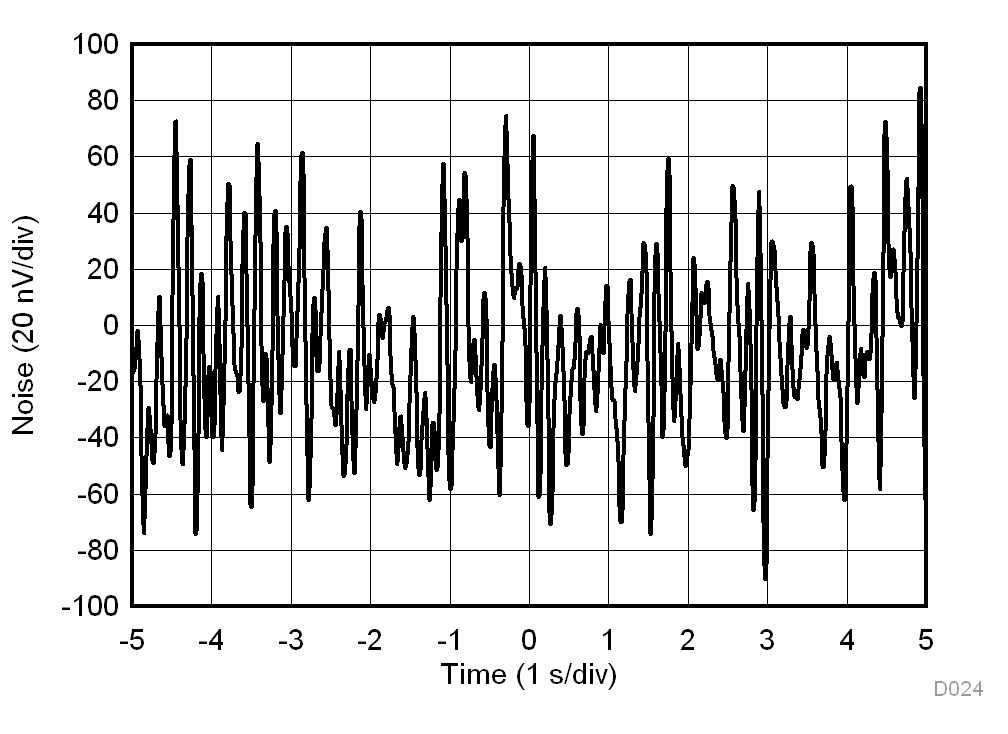
| G = 1000 |
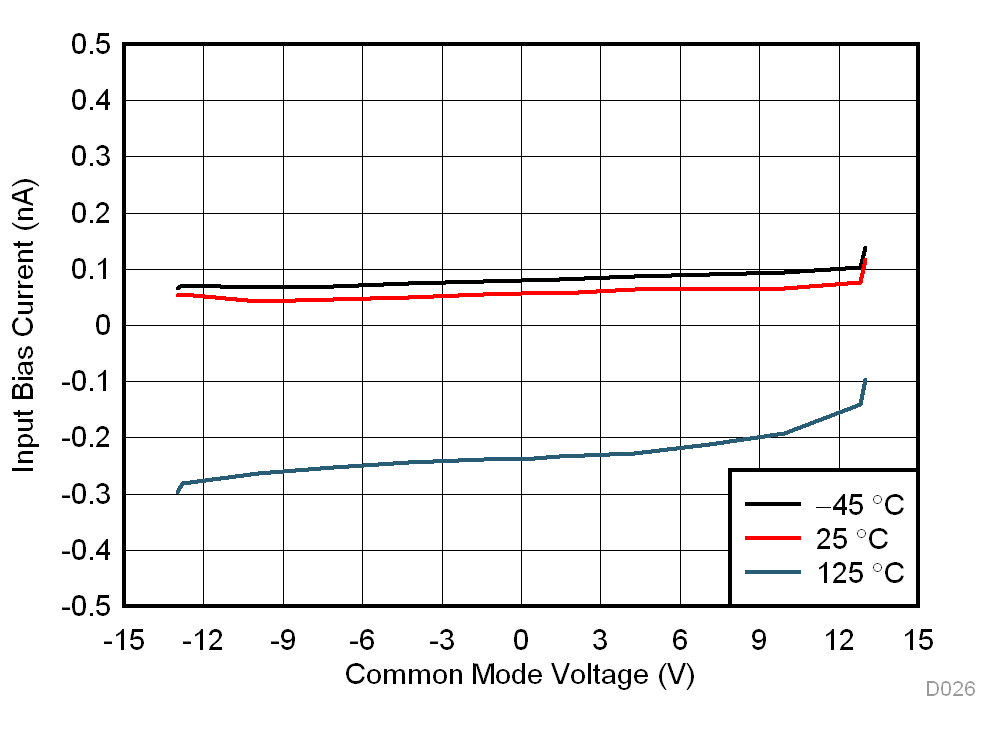
| VS = ±15 V | ||
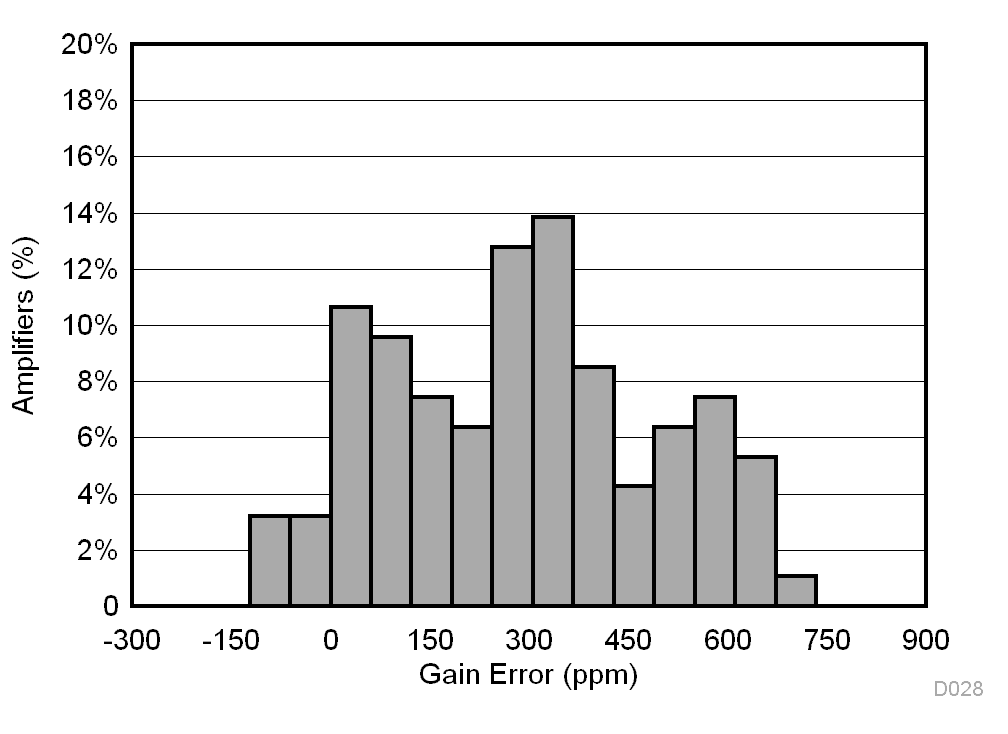
| N = 94 | Mean = 286 ppm | Std. Dev. = 204 ppm |
| G = 10 |
G = 10
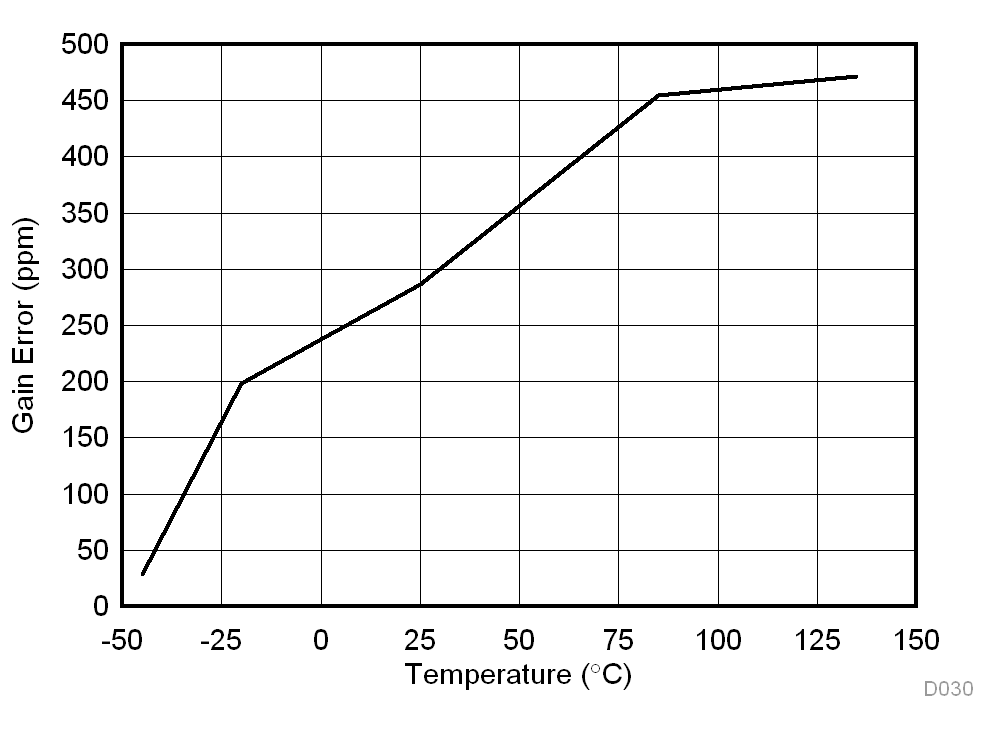
| G = 10 | ||
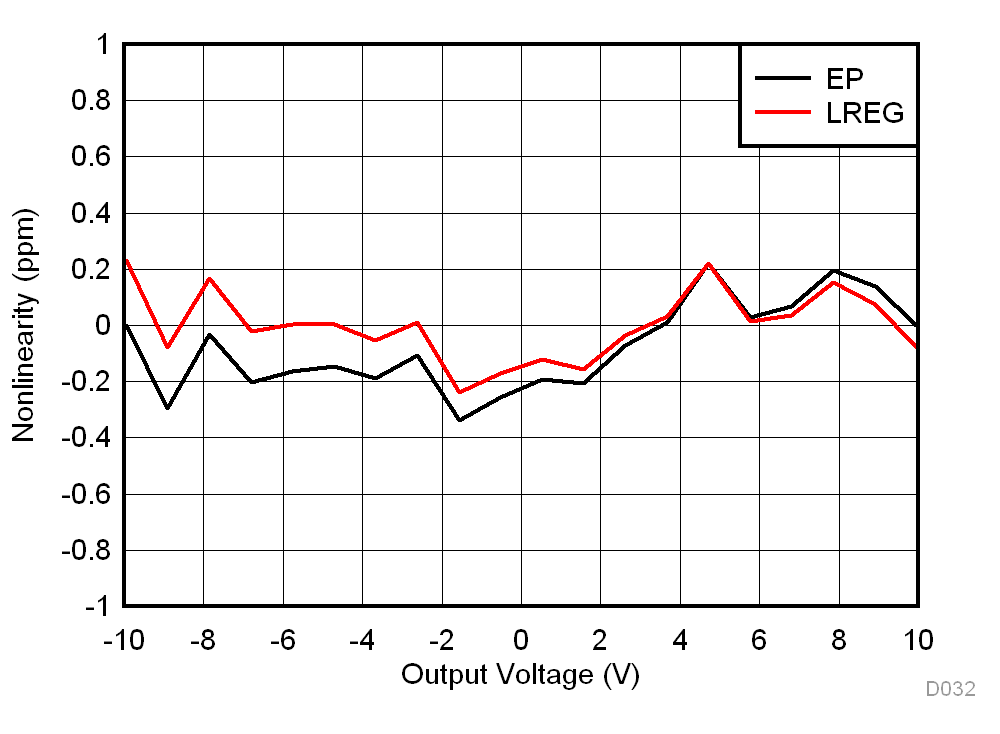
| G = 1 |
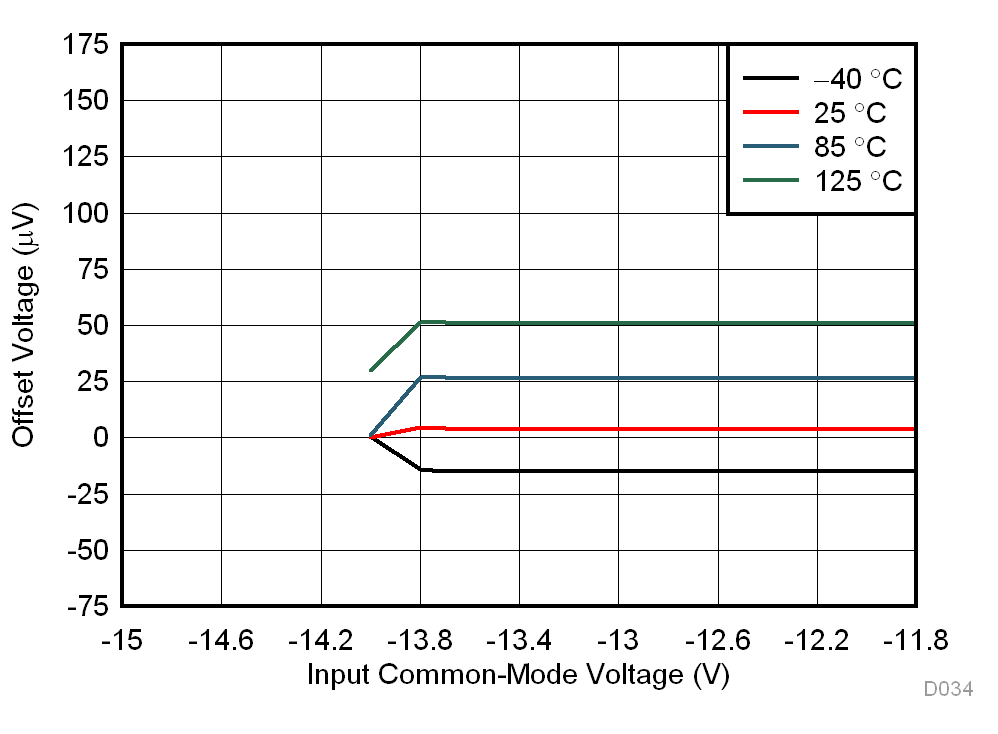
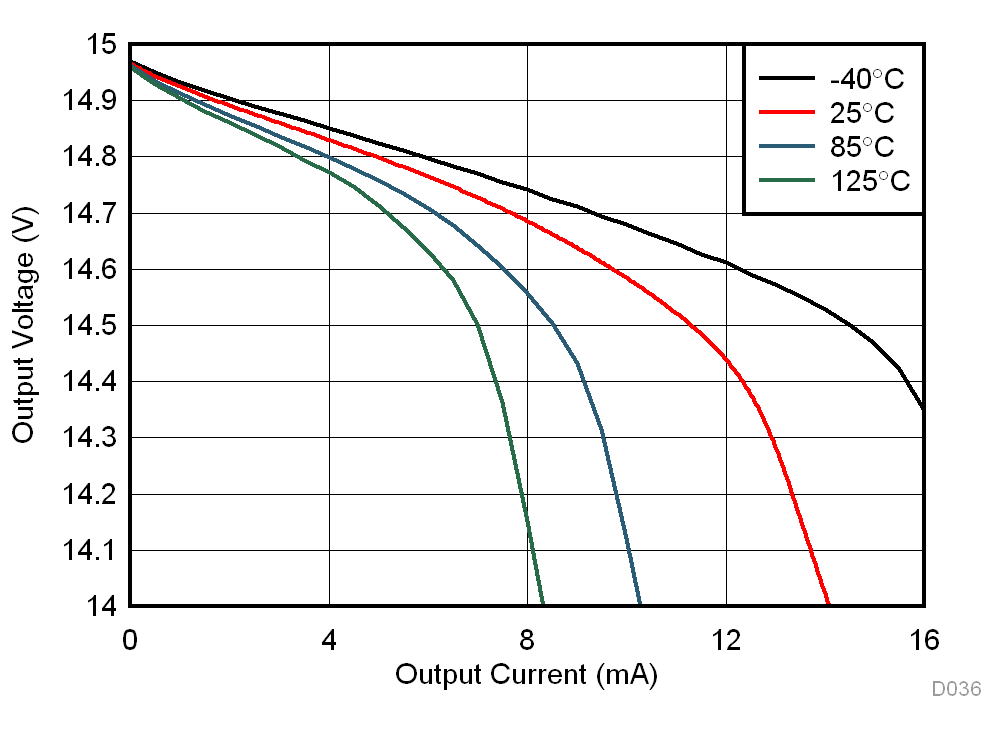
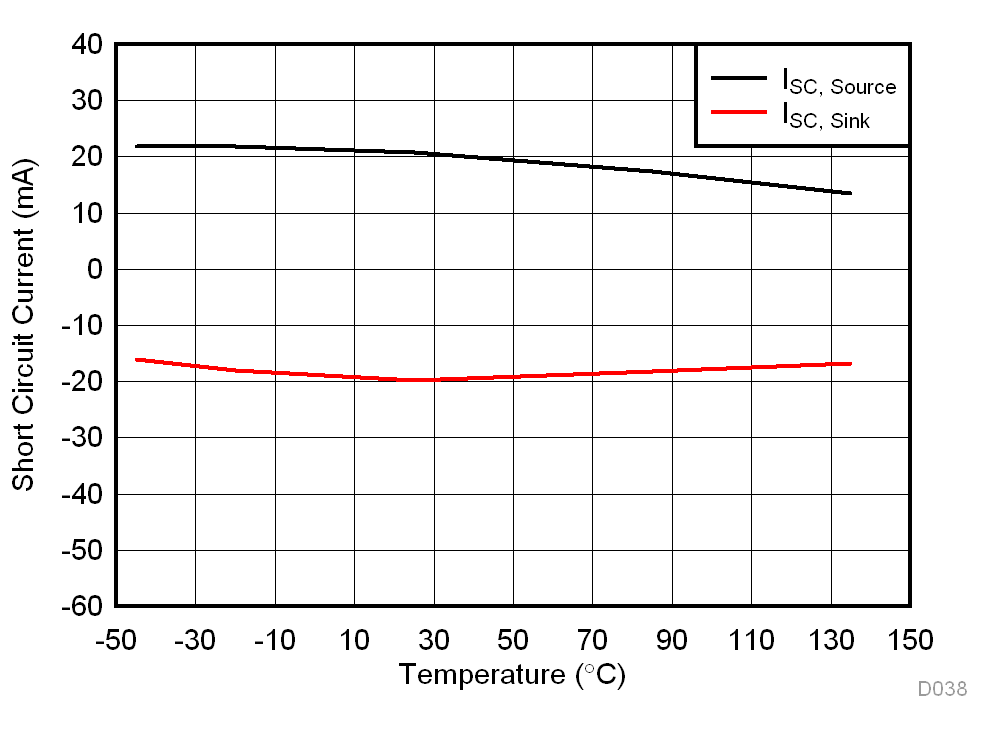
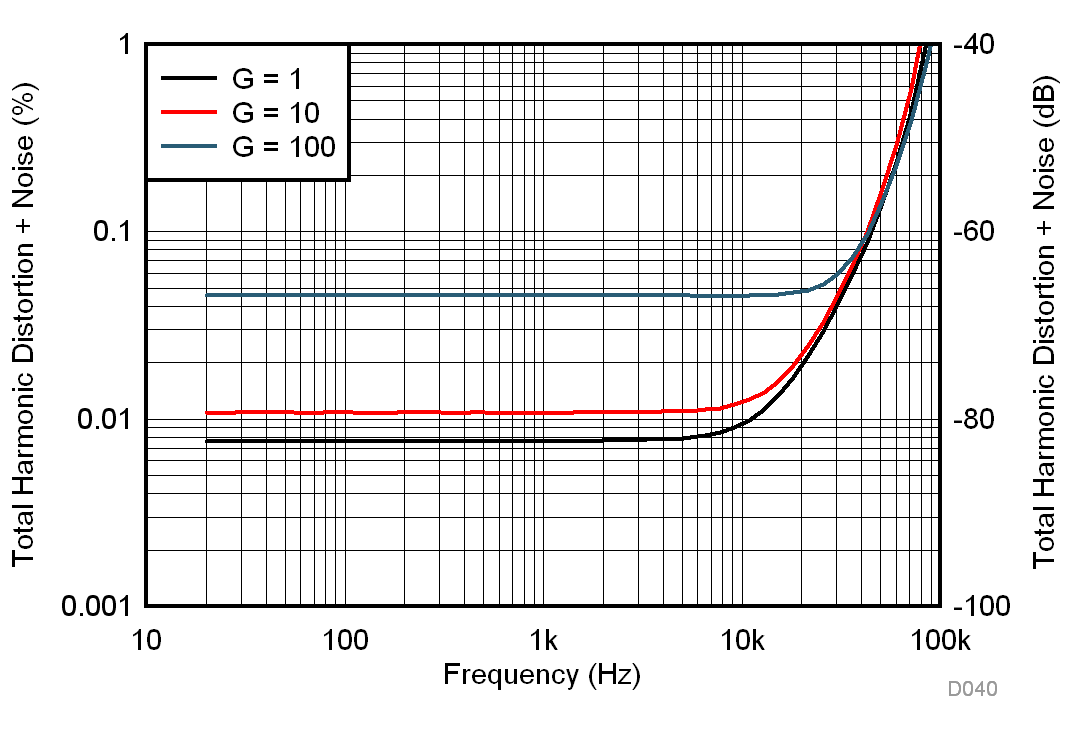
| 500-kHz measurement bandwidth | ||
| 1-VRMS output voltage | 100-kΩ load | |
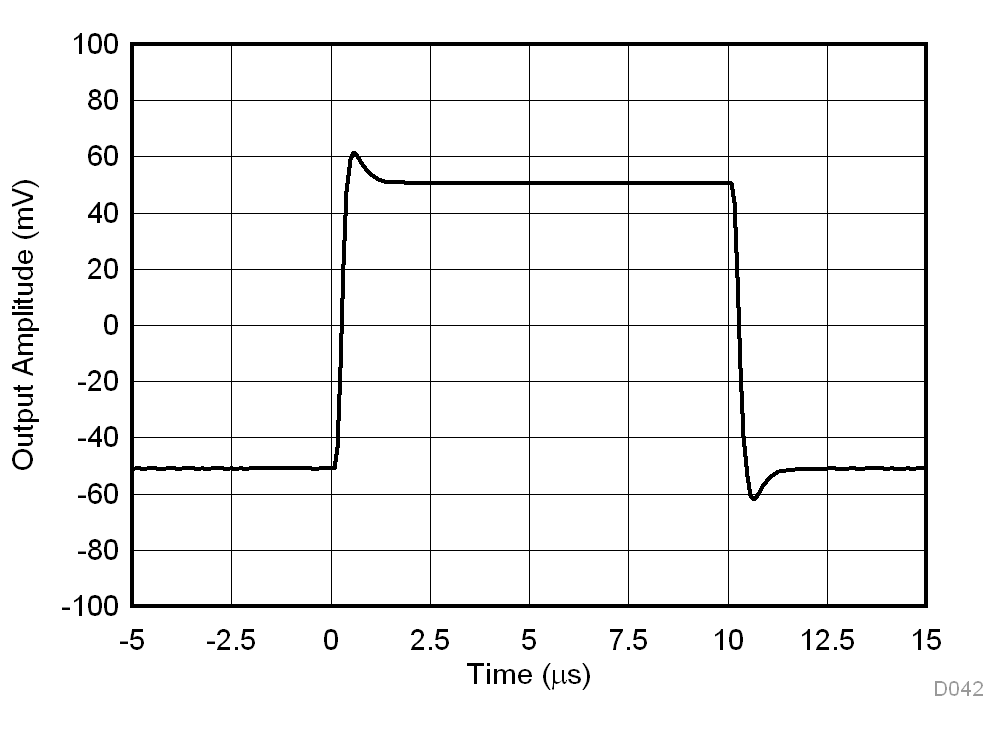
| G = 1 | RL = 10 kΩ | CL = 100 pF |
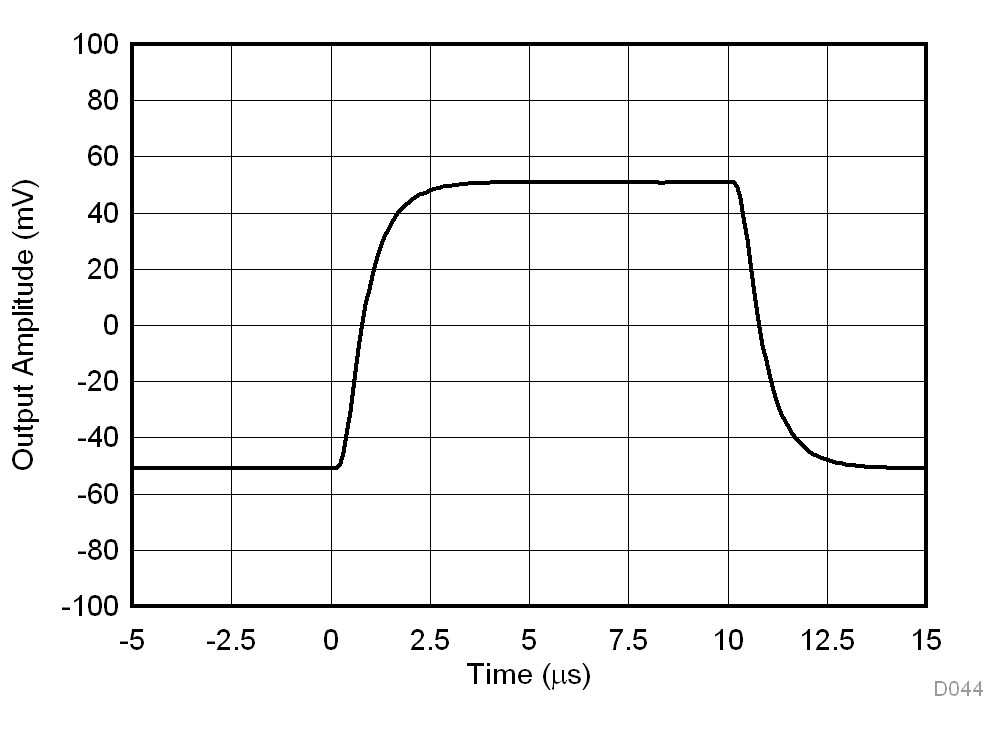
| G = 100 | RL = 10 kΩ | CL = 100 pF |
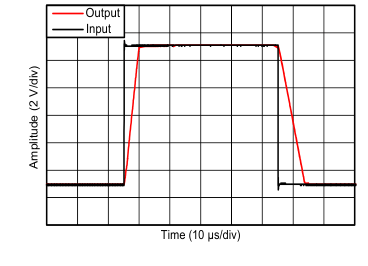


| VS = 5 V | G = 1 |

| VS = ±5 V | VREF = 0 V |

| N = 45 | Mean = 0.0357 µV/°C | Std. Dev. = 0.099 µV/°C |
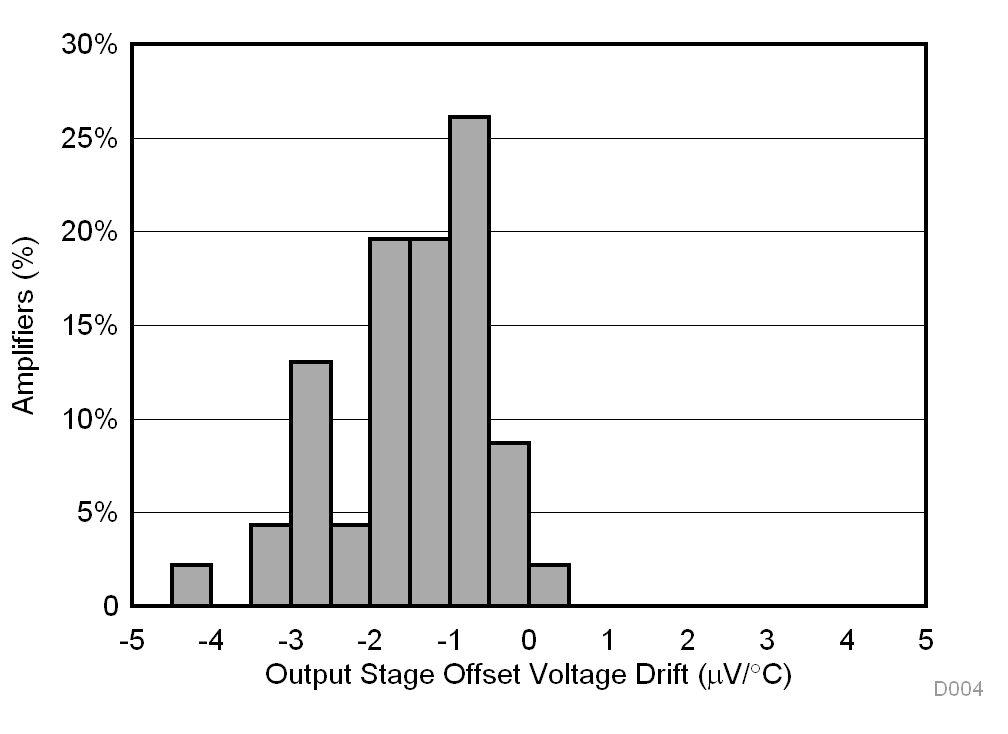
| N = 45 | Mean = –1.49 µV/°C | Std. Dev. = 0.89 µV/°C |

| 45 units, 1 wafer lots |
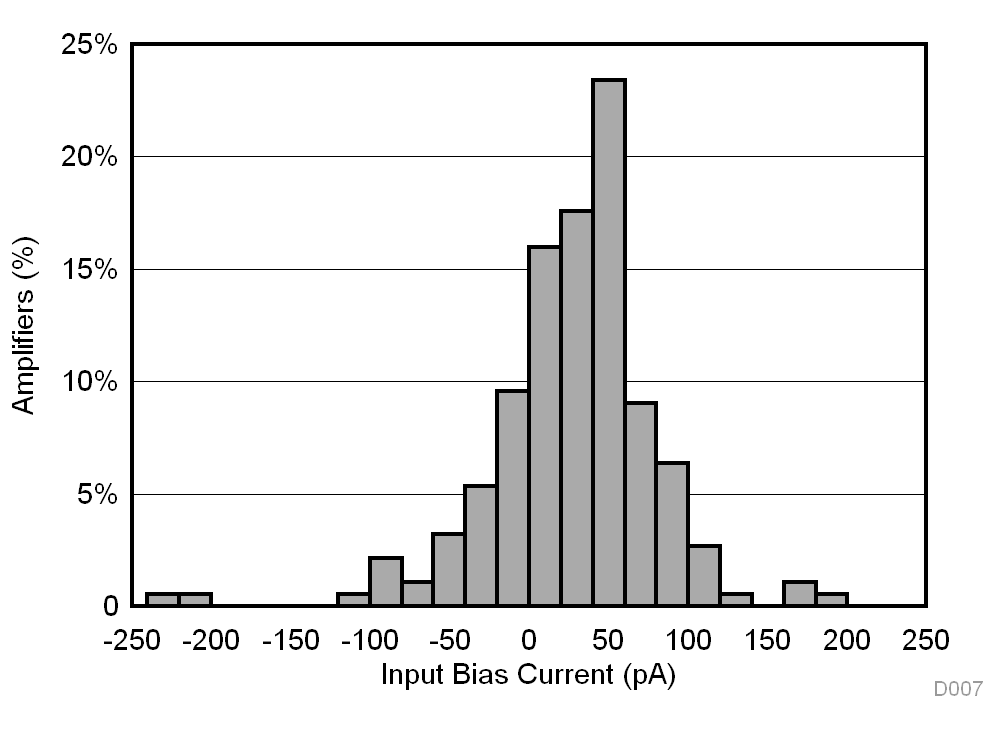
| N = 94 | Mean = –27.65 pA | Std. Dev. = 52.58 pA |
| TA = 90°C |
| N = 94 | G = 1 | |
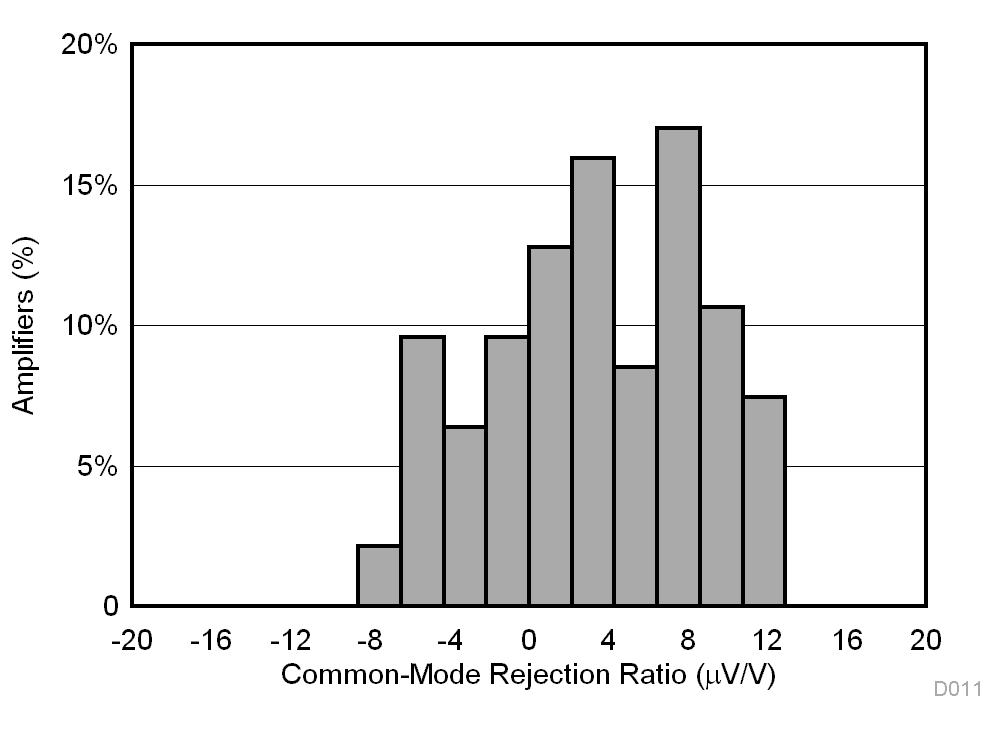
| N = 94 | Mean = 3.23 µV/V | Std. Dev. = 5.38 µV/V |
| G = 1 |
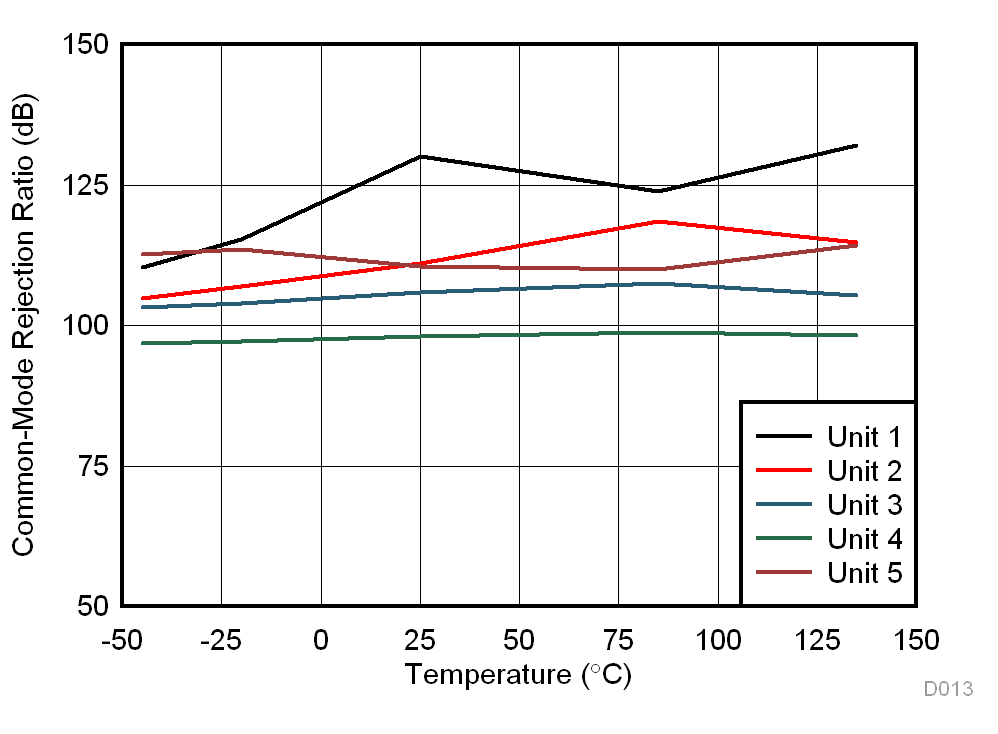
| 5 typical units | G = 1 | |
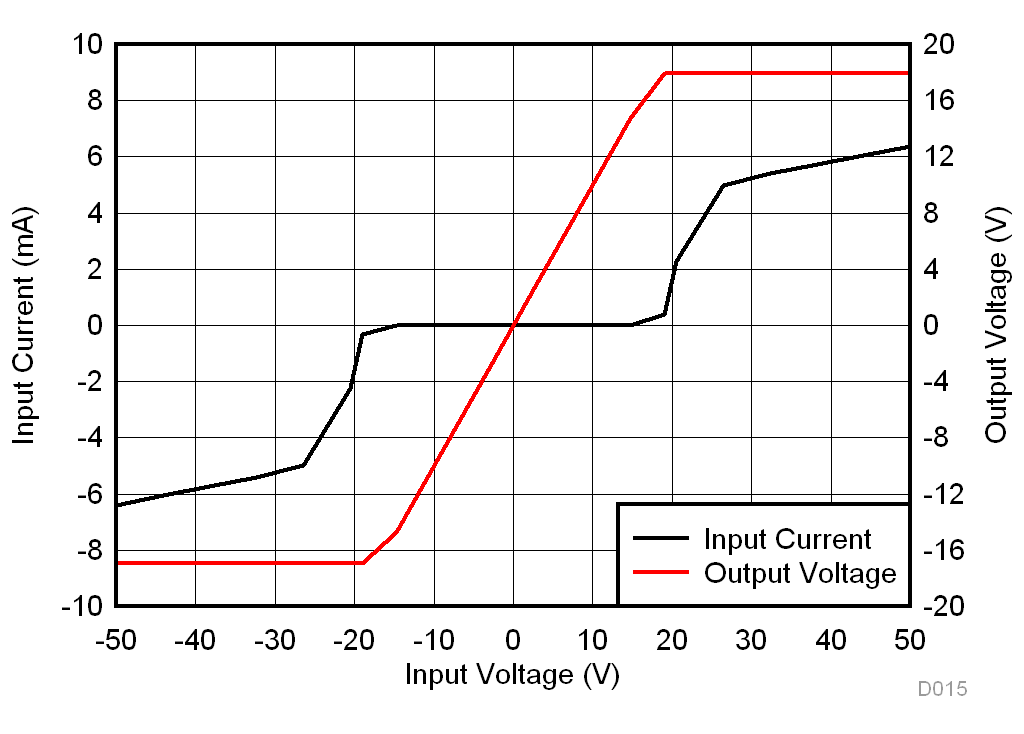
| VS = 36 V | ||
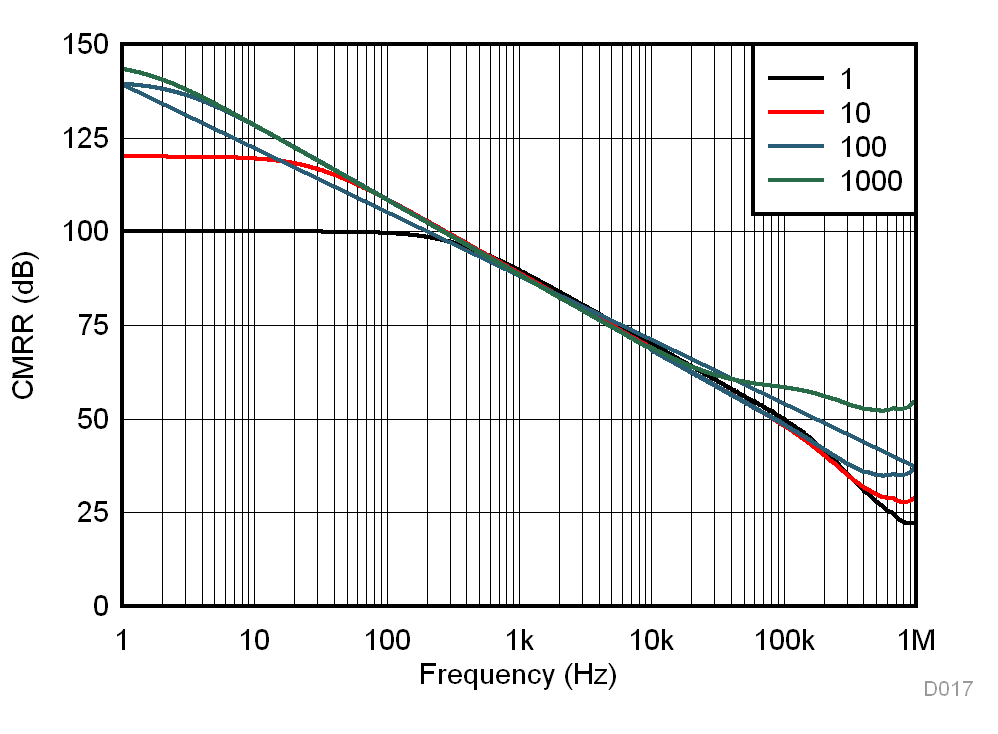
| 1-kΩ source imbalance | ||
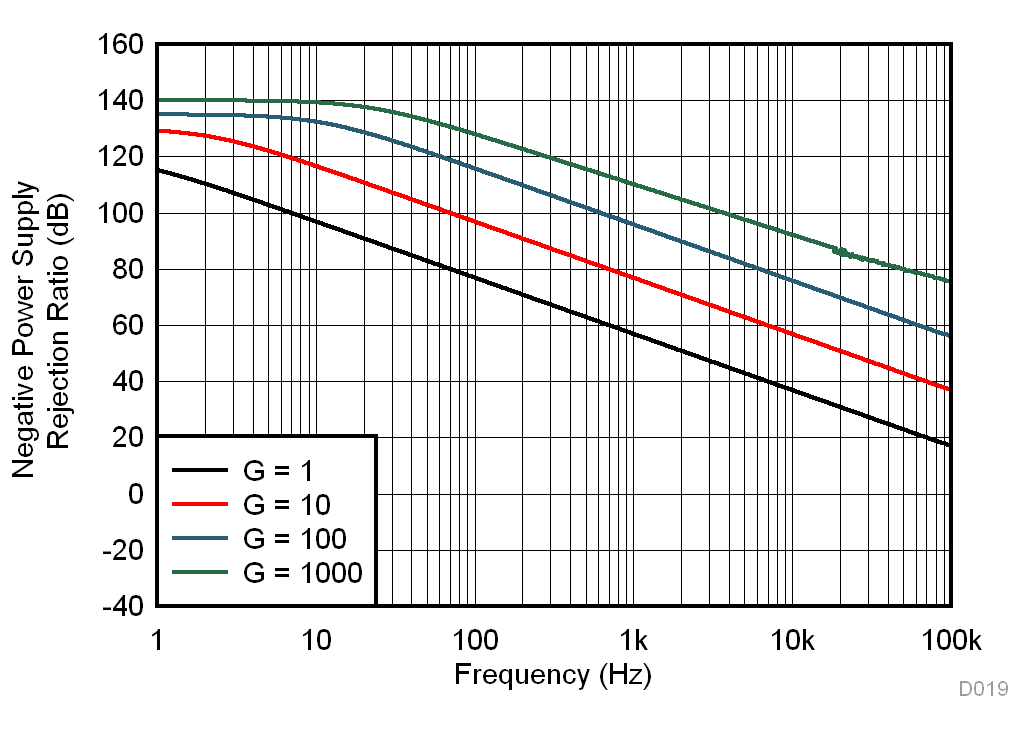
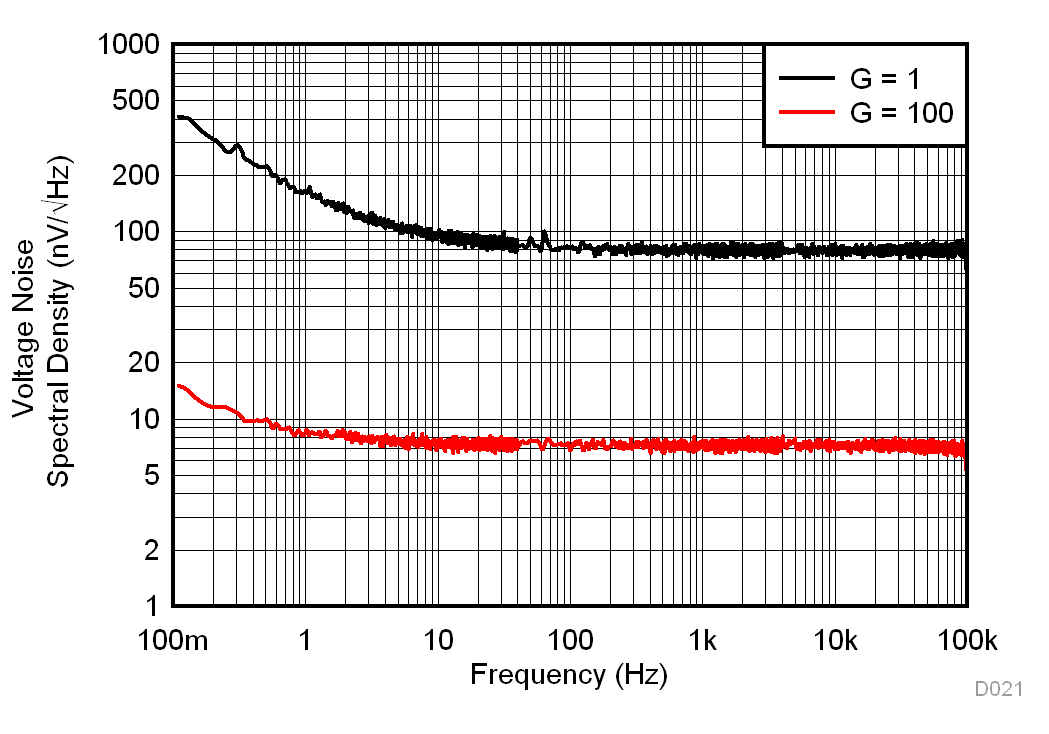 Figure 7-22 Voltage Noise Spectral Density vs Frequency (RTI)
Figure 7-22 Voltage Noise Spectral Density vs Frequency (RTI)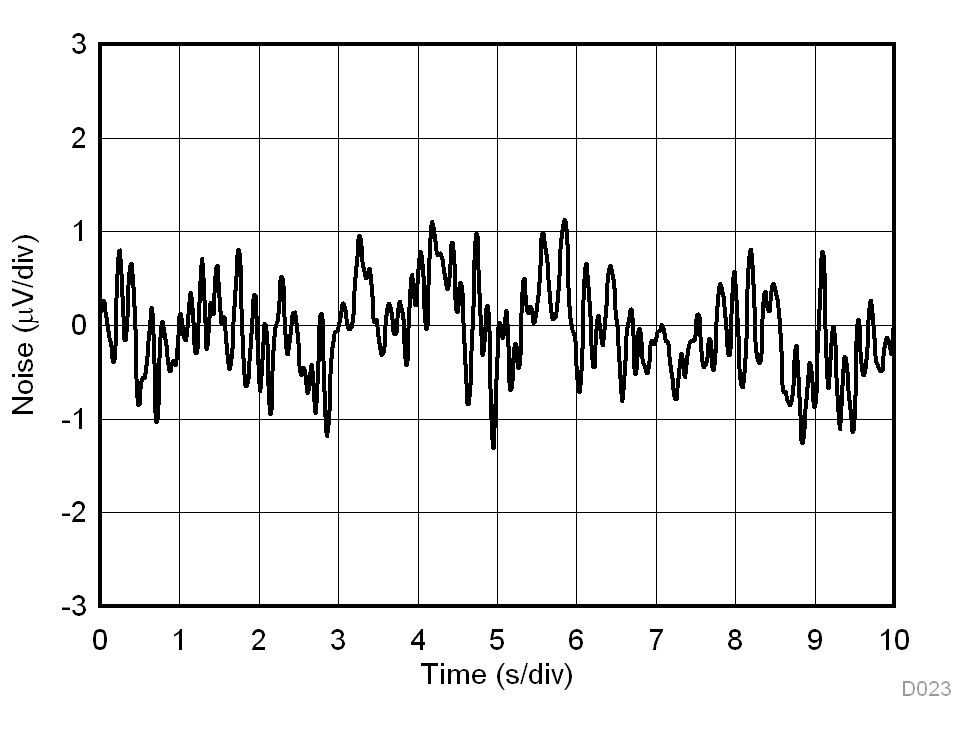
| G = 1 |
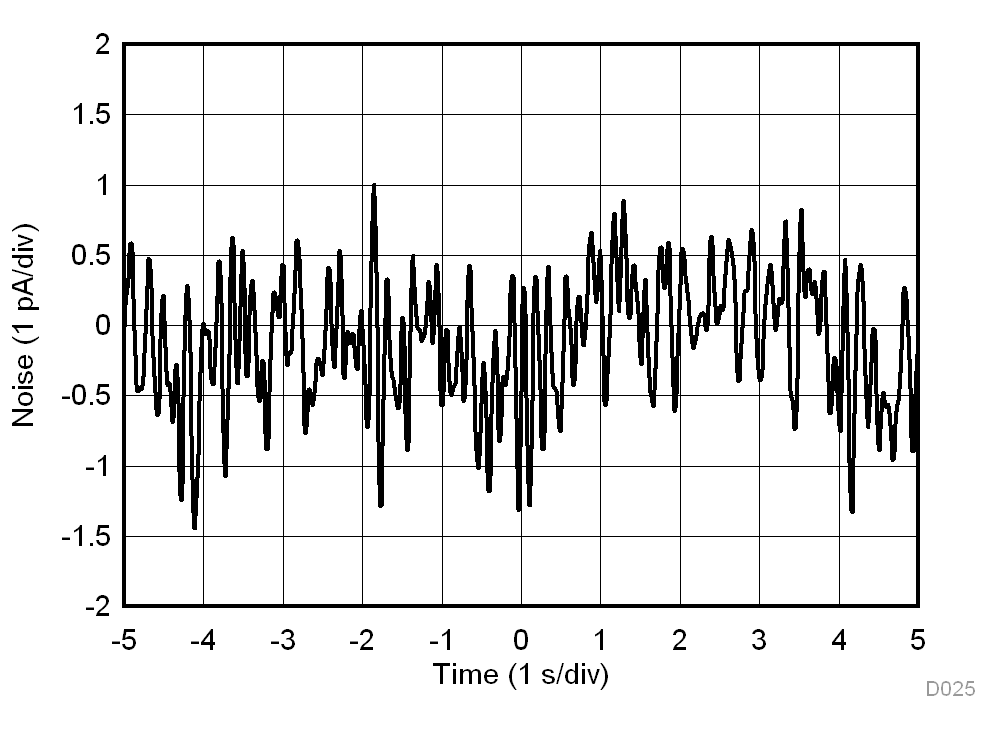
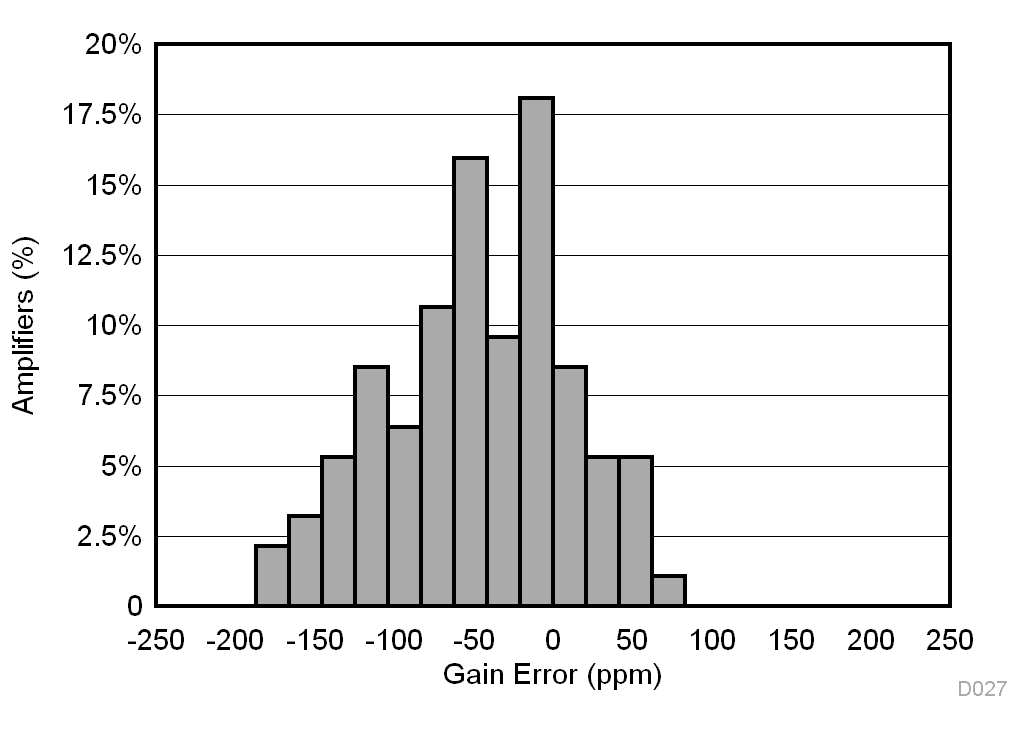
| N = 94 | Mean = –48 ppm | Std. Dev. = 58 ppm |
| G = 1 |
G = 1
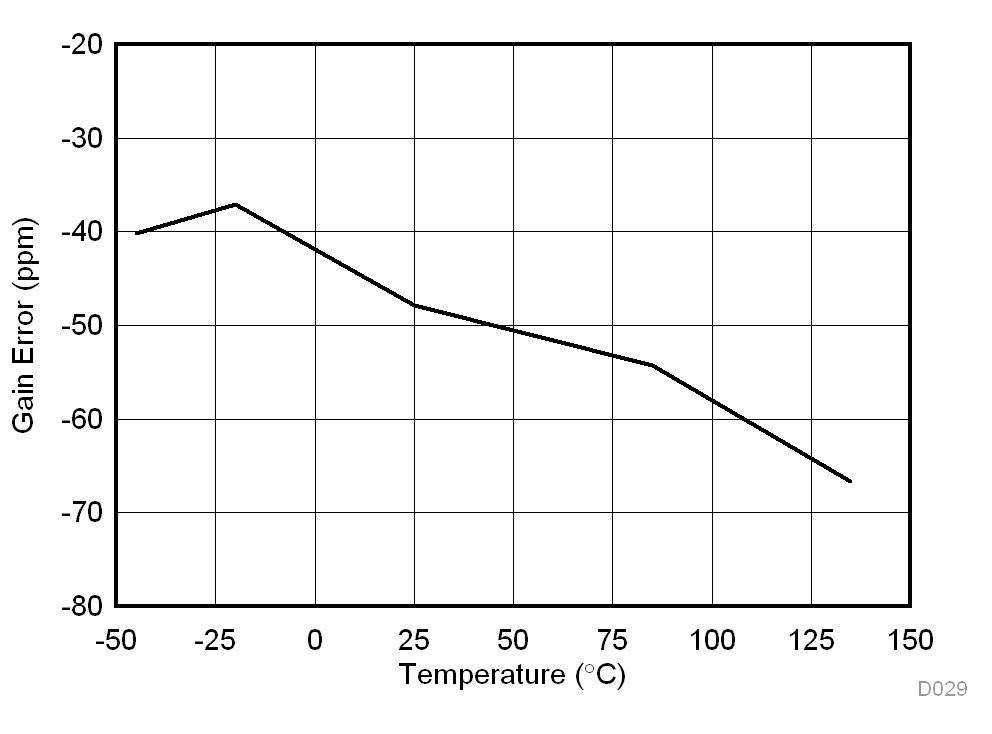
| G = 1 | ||
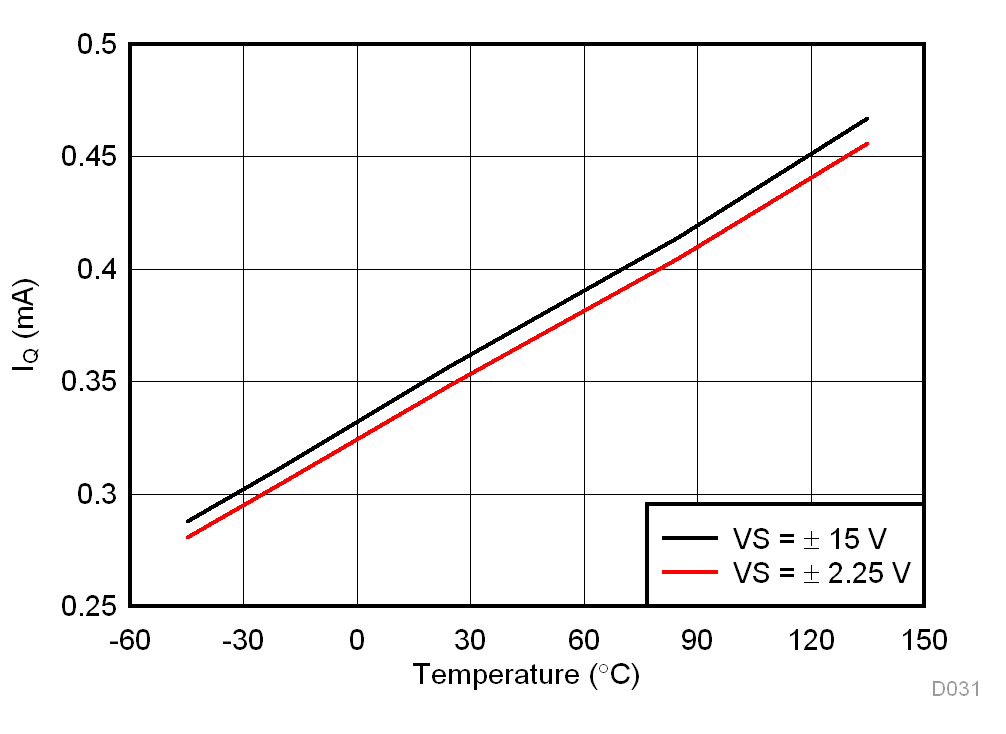
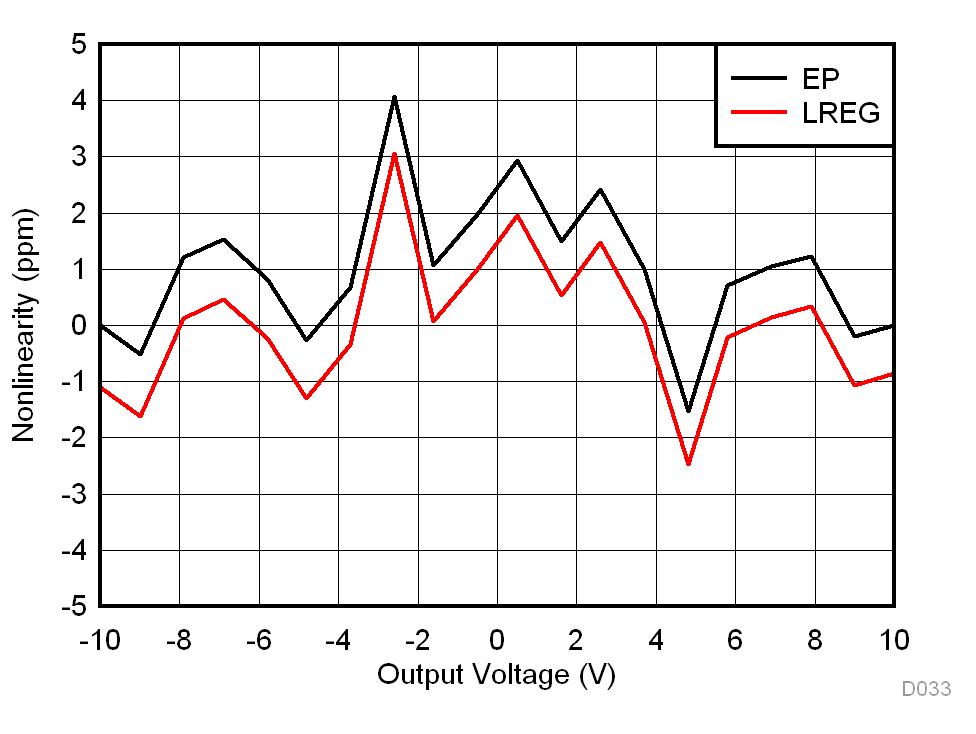
| G = 10 |
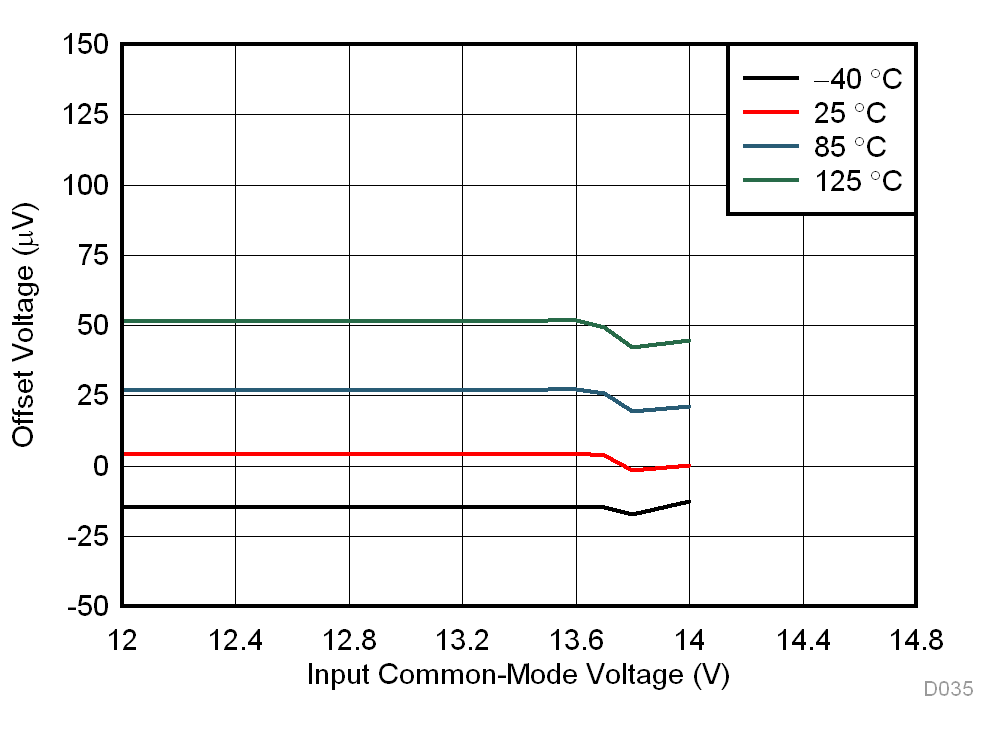
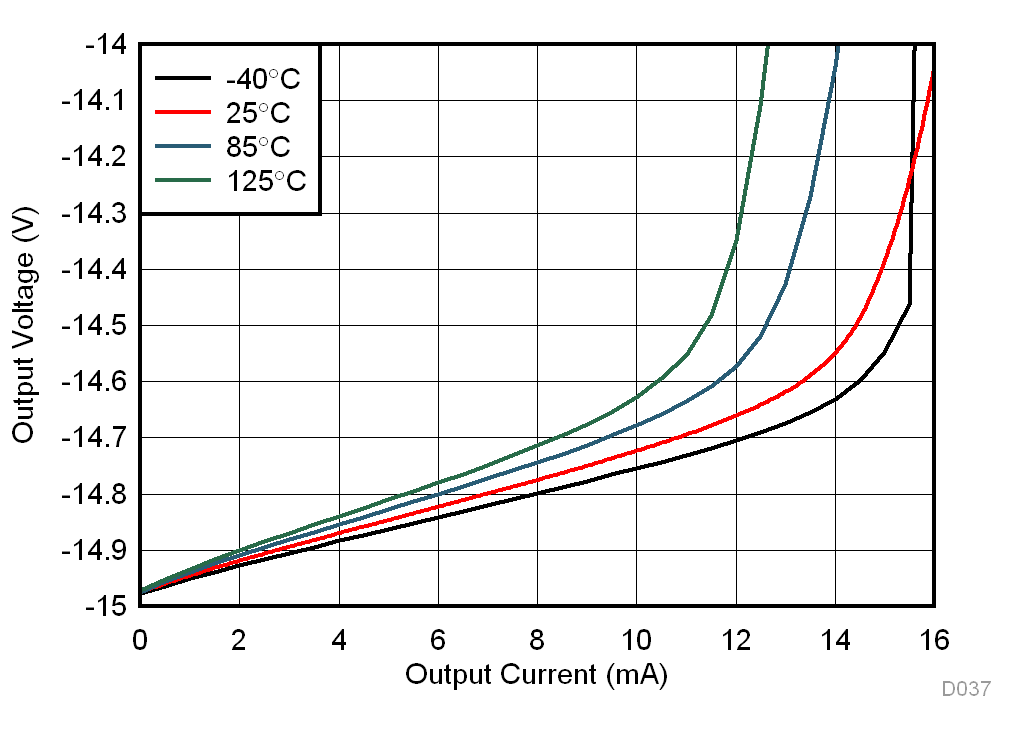
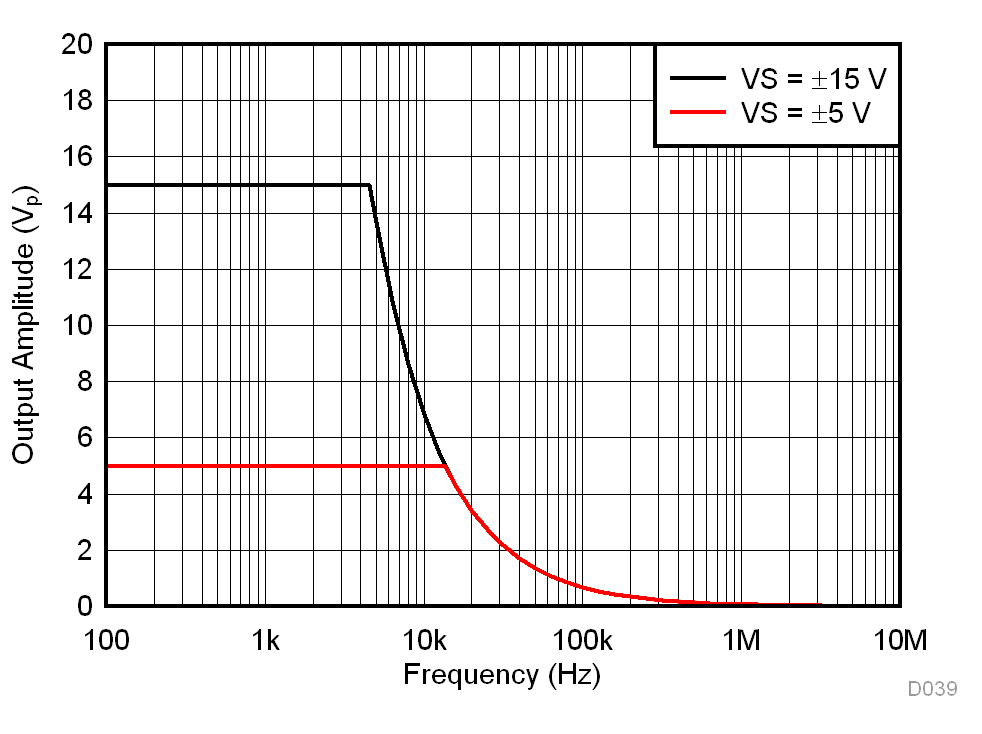
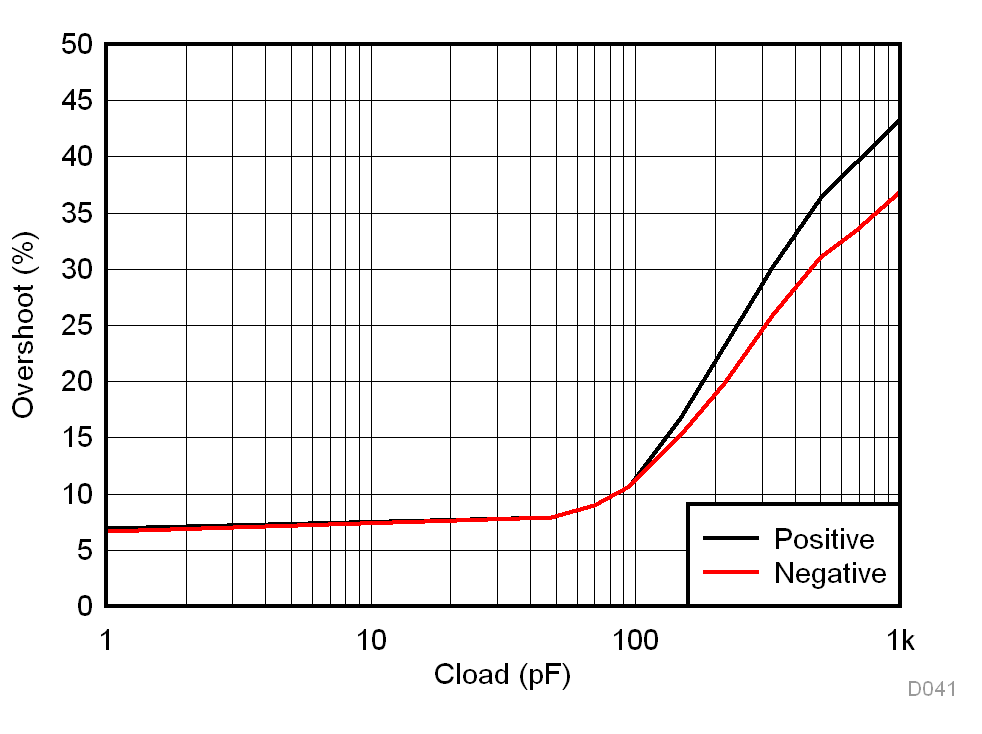
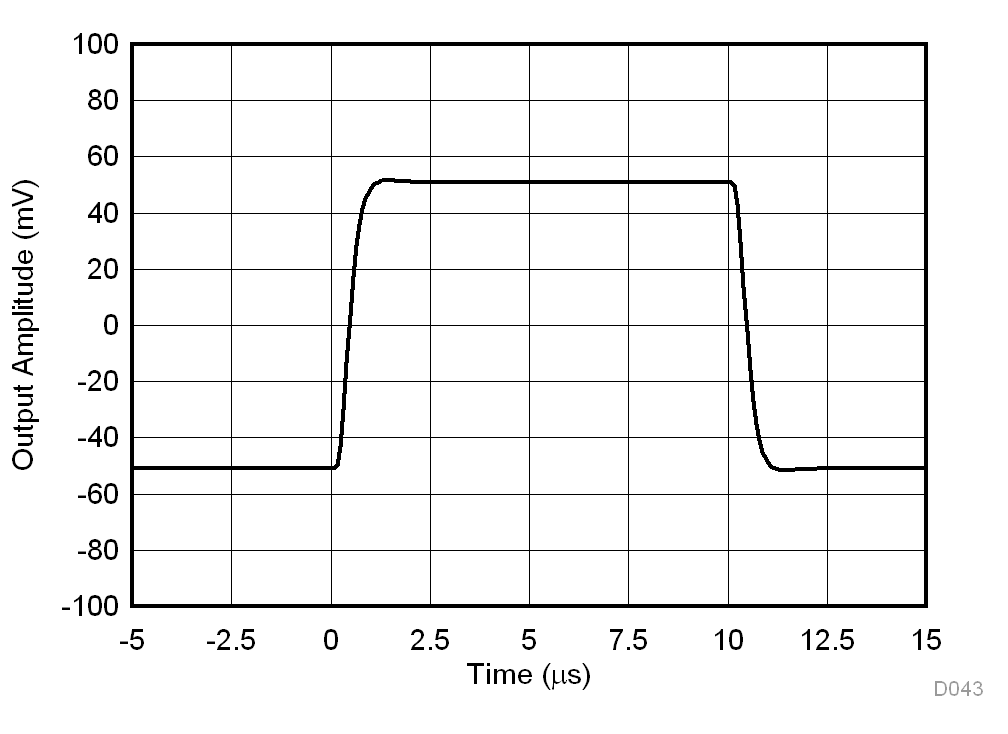
| G = 10 | RL = 10 kΩ | CL = 100 pF |
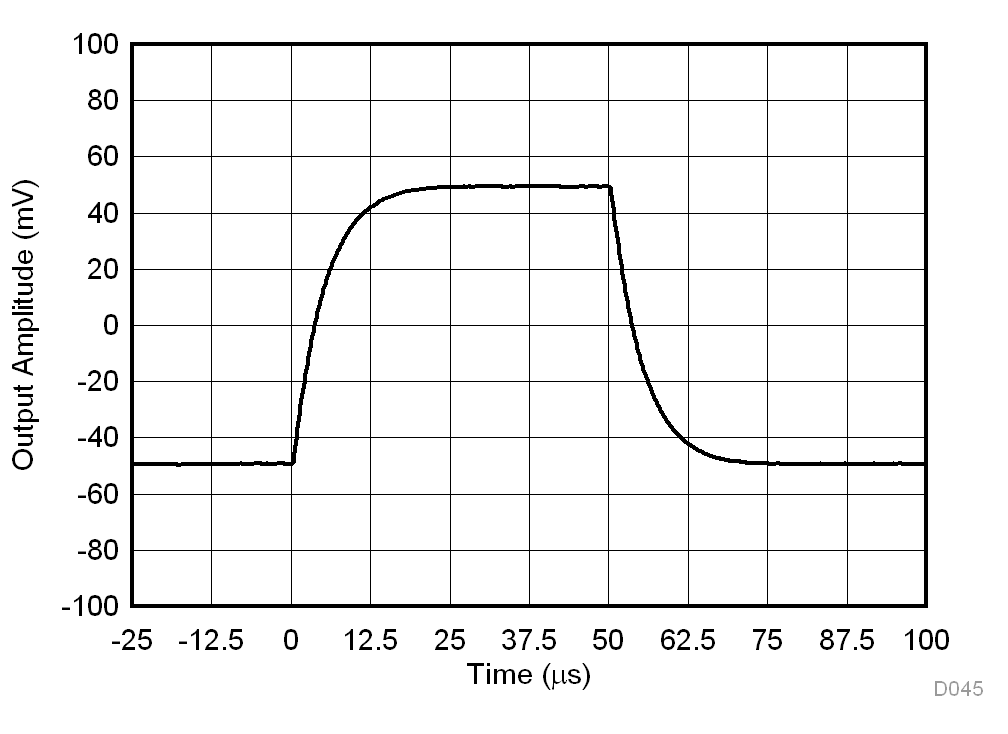
| G = 1000 | RL = 10 kΩ | CL = 100 pF |
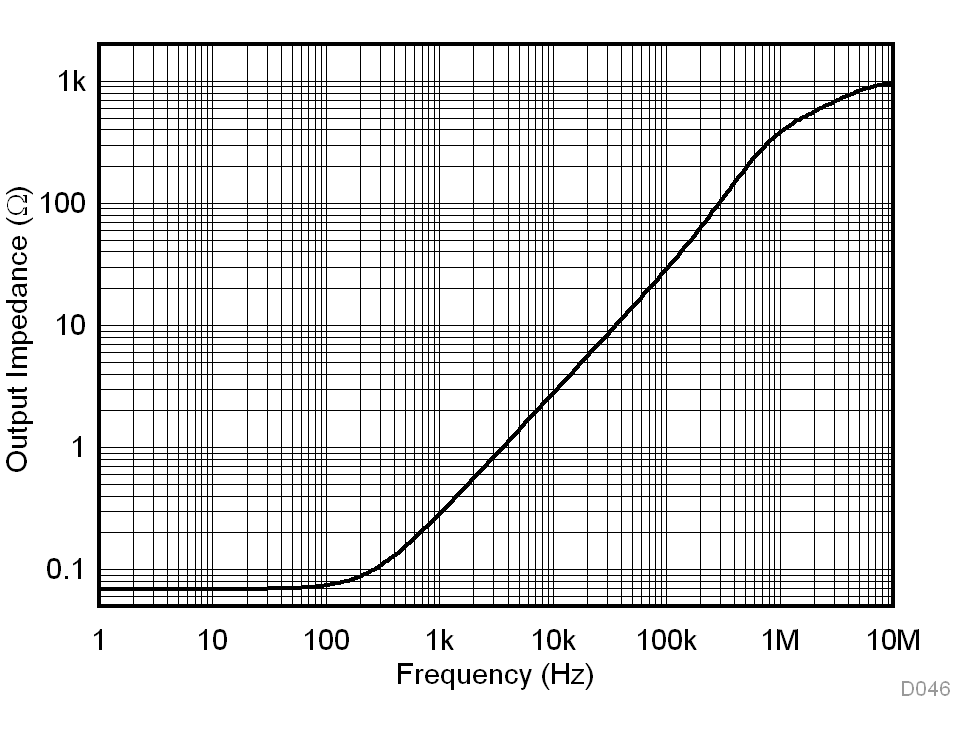

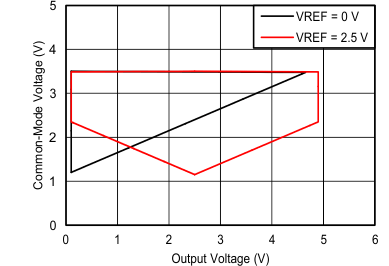
| VS = 5 V | G = 100 |

| VS = ±15 V | VREF = 0 V |